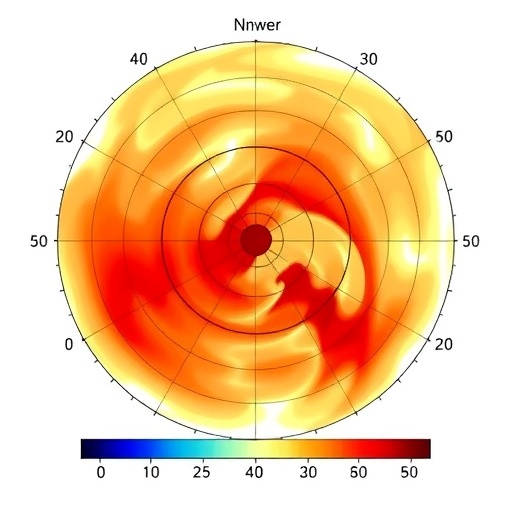In a groundbreaking study, researchers R. Blackport and M. Sigmond explore the paradoxical trend of warming cold extremes and the inadequacy of traditional climate assessment methods in capturing these dynamics. The work presented in their publication highlights the critical need to reevaluate how we define and measure temperature extremes, as the consequences of climate change alter the landscape of both cold and warm temperature events.
The study’s foundation lies in the observation that while global temperatures have risen significantly due to climate change, the occurrence and severity of cold extremes have not been addressed with the same urgency or precision. Traditional methodologies often employ fixed thresholds to categorize temperature extremes, but this approach has proven insufficient in accurately reflecting the changing climate. As a result, there is a growing concern among climatologists and policymakers that such fixed definitions may mask the reality of warming effects experienced in regions once known for their cold weather.
Blackport and Sigmond leverage comprehensive climate data spanning several decades to challenge the validity of fixed threshold definitions. Their research reveals that, across various geographic regions, cold temperature extremes have been warming at a rate that diverges from historical norms. This warming of cold extremes signifies not only a shift in temperature ranges but also demands a reevaluation of the impacts these changes have on ecosystems, agriculture, and human health.
One of the study’s pivotal findings indicates that extreme cold events, once predictable based on fixed temperature criteria, are becoming increasingly erratic. By analyzing patterns in historical weather data, the researchers demonstrate that the variability of cold extremes is not only influenced by regional characteristics but also by broader climatic trends. This nuanced understanding points to the complexities of climate systems and underscores the necessity for adaptive methodologies in climate research.
Moreover, the study raises significant implications for regions reliant on cold weather for agriculture and other activities sensitive to temperature. With fixed definitions failing to capture the new realities of warming cold extremes, farmers and agricultural planners may find themselves ill-prepared for the shifts in growing seasons and crop viability. The need for flexible definitions based on dynamic environmental indicators becomes apparent in light of these findings.
The implications of warming cold extremes extend beyond agriculture into realms such as public health and disaster preparedness. As the frequency and intensity of cold snaps diminish, populations that have adapted to current climatic conditions may face unexpected challenges. It has been established that cold weather plays a crucial role in regulating disease outbreaks and curbing insect populations. As cold extremes become less pronounced, the potential for pest infestations and disease proliferation increases, posing significant threats to food security and public health systems.
In urban planning and infrastructure development, the findings offer critical insights as well. Cities that have traditionally designed heating and cold weather management systems based on fixed temperature benchmarks may find their existing frameworks inadequate. This reality highlights the urgency for adaptation in urban design, necessitating new building codes and policies that accommodate the emerging shifts in climate behavior.
Furthermore, this research calls into question the methodologies deployed in climate modeling and forecasting. Conventional climate models often rely on historical climate data to predict future patterns. However, relying heavily on fixed thresholds can obscure the subtler shifts that may be occurring amidst the larger climatic calendar. Blackport and Sigmond advocate for models that incorporate a more fluid understanding of temperature extremes, allowing for better predictions and responses to the challenges posed by climate change.
There is also a social dimension to their findings that cannot be overlooked. The socioeconomic ramifications of inadequately addressing warming cold extremes in policy and planning are profound, particularly for marginalized and vulnerable populations. Acknowledging the complexities of changing environmental conditions is essential to formulating equitable energy and public health policies that protect those most at risk from climate-related impacts.
In conclusion, Blackport and Sigmond’s research underscores an urgent need for reevaluation of the definitions we apply to climate extremes. As the planet continues to warm, understanding the dynamics of cold temperature events through flexible, adaptive frameworks will be crucial in preparing for future environmental changes. Policymakers, researchers, and communities must pivot to embrace a nuanced approach to temperature recording, ensuring responsive strategies are put in place for climate resilience. A shift towards incorporating dynamic definitions into climate science will not only enhance our understanding of climate impacts but also serve as a foundation for effective mitigation and adaptation strategies in the face of global warming.
The implications of this study are immense, as they open up new directions for research and investigation into the ever-changing climate landscape. Further studies will be essential to validate these findings and continue uncovering the intricacies of how temperature extremes interact with global warming.
As we stand at the precipice of significant environmental alterations, understanding and openly discussing these phenomena will play a pivotal role in guiding humanity toward a sustainable future. Without adequate grasp and preparation for the changing factors influencing cold extremes, we risk underestimating the profound effects climate change will continue to impart on natural and human systems alike.
Subject of Research: Warming of Cold Extremes
Article Title: Observed warming of cold extremes is not captured with a fixed threshold definition
Article References:
Blackport, R., Sigmond, M. Observed warming of cold extremes is not captured with a fixed threshold definition.
Commun Earth Environ 6, 795 (2025). https://doi.org/10.1038/s43247-025-02629-y
Image Credits: AI Generated
DOI: 10.1038/s43247-025-02629-y
Keywords: Climate Change, Cold Extremes, Temperature Thresholds, Environmental Policy, Climate Models, Public Health, Agriculture, Socioeconomic Impact




